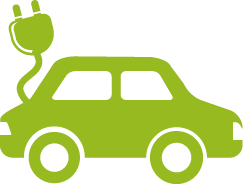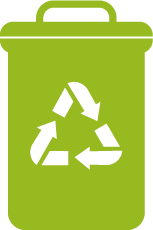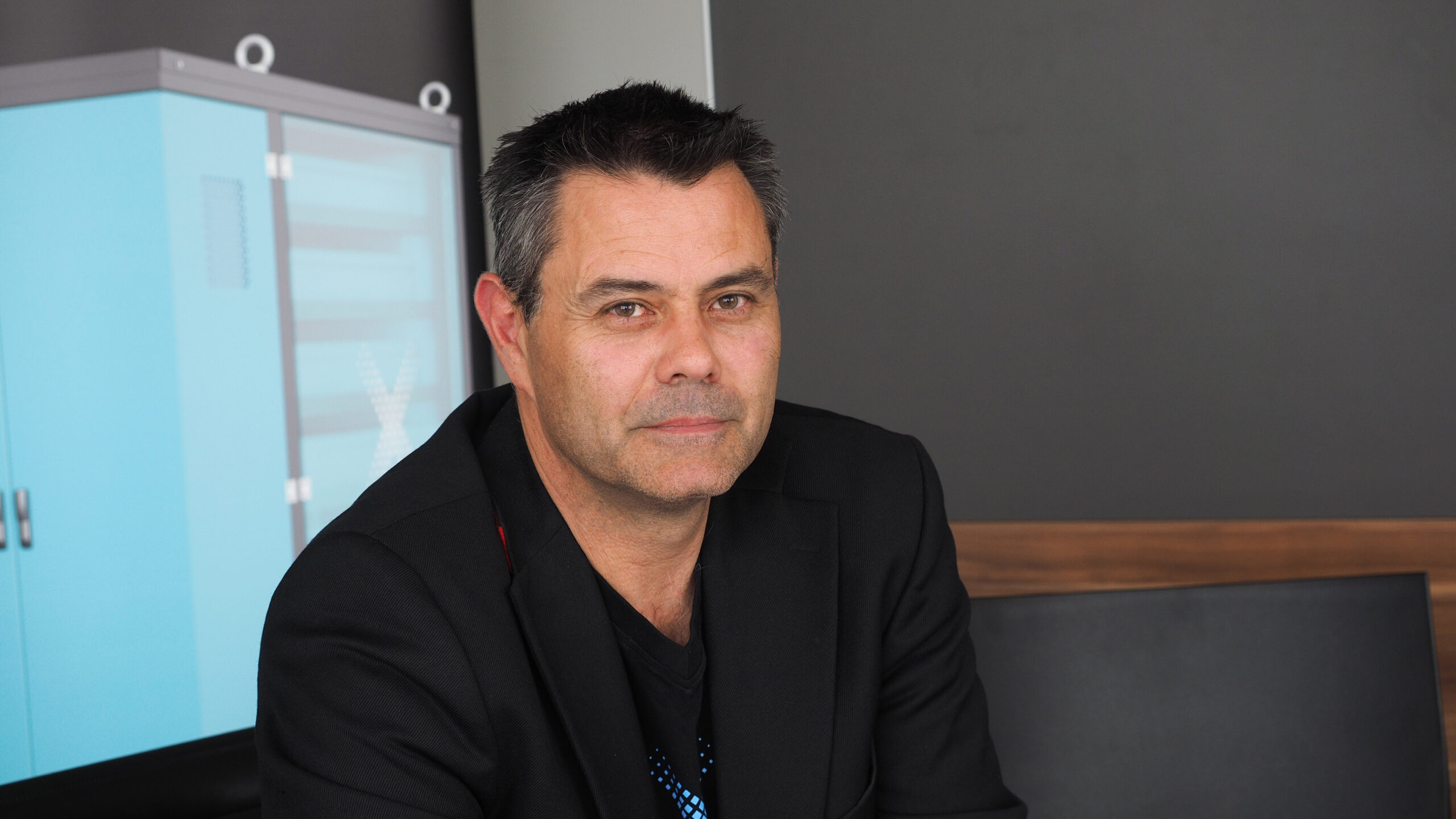screentime
INTERNATIONAL BATTERY AND ENERGY STORAGE ALLIANCE

Emobility
E-Mobility has been a popular topic for a multitude of years. It is a part of the energy transition: switching from vehicles powered by fossil fuels to those powered by electricity decreases carbon emissions. According to data from a report by DCTI in 2020, that the growth of new registrations of fully electric- and hybrid vehicles has risen by 54% and 44% respectively.
Nevertheless, a macro view showed that the process is only in its beginning stages: At the beginning of 2019, EV’s only made up 0.13% of all registered vehicles in Germany–numbers have continued to rise significantly since then. One of the biggest hurdles for e-mobility has been missing infrastructure for charging ones EV, and affordable, smart solutions for doing so.
Currently, according to data by EUPD Research, 10 battery powered electric cars are met with one registered public charging point. While many mainly think of cars when it comes to e-mobility, the maritime sector has been making strides forward as well.

Emobility
E-Mobility has been a popular topic for a multitude of years. It is a part of the energy transition: switching from vehicles powered by fossil fuels to those powered by electricity decreases carbon emissions. According to data from a report by DCTI in 2020, that the growth of new registrations of fully electric- and hybrid vehicles has risen by 54% and 44% respectively.
Nevertheless, a macro view showed that the process is only in its beginning stages: At the beginning of 2019, EV’s only made up 0.13% of all registered vehicles in Germany–numbers have continued to rise significantly since then. One of the biggest hurdles for e-mobility has been missing infrastructure for charging ones EV, and affordable, smart solutions for doing so.
Currently, according to data by EUPD Research, 10 battery powered electric cars are met with one registered public charging point. While many mainly think of cars when it comes to e-mobility, the maritime sector has been making strides forward as well.

Electrical storage
Battery energy storage systems are a key factor for the energy transition. They can be used to store excess renewable energy and provide electricity produced from solar panels during the night, for example.
Storage systems can be used for self-consumption, in the general energy market, as emergency power sources, act as an alternative power source on islands and more. There are four segments of stationary battery energy storage systems: Residential, commercial, industrial and utility.
Residential ESS serve as backup for power failures and are integrated into the grid of decentralized low power renewables. Commercial ones are located in factories and commercial buildings. They provide short term support during grid faults and production deficits. Industrial ESS are located e.g. in wind or PV farms and integrate decentralized medium power renewables into the grid.
Utility battery energy storage systems can be combined with high power renewable energy sources and connected to the medium voltage (MV) grid directly or via MV transformer.

Battery storage
Battery energy storage systems are a key factor for the energy transition. They can be used to store excess renewable energy and provide electricity produced from solar panels during the night, for example.
Storage systems can be used for self-consumption, in the general energy market, as emergency power sources, act as an alternative power source on islands and more. There are four segments of stationary battery energy storage systems: Residential, commercial, industrial and utility.
Residential ESS serve as backup for power failures and are integrated into the grid of decentralized low power renewables. Commercial ones are located in factories and commercial buildings. They provide short term support during grid faults and production deficits. Industrial ESS are located e.g. in wind or PV farms and integrate decentralized medium power renewables into the grid.
Utility battery energy storage systems can be combined with high power renewable energy sources and connected to the medium voltage (MV) grid directly or via MV transformer.

Green hydrogen
Due to its capabilities in storing and transporting energy, hydrogen has been getting more spotlight in recent years. Especially when it comes to energy from renewable sources, which are theoretically widely available but not always in the spots or times they are needed, hydrogen is a viable candidate to close these gaps.
The German Hydrogen and Fuel-Cell-Association expects a development toward decentralized energy production, which will lead to a hydrogen-infrastructure in the future. In addition to these more stationary uses of hydrogen, it can be used for powering vehicles–this area of use is still in development, though.
Hydrogen can be produced in different ways. Green hydrogen, for example, is created through the electrolysis of water and its production is completely CO2-free, since the electricity used is sourced from renewable energy sources.

Green hydrogen
Due to its capabilities in storing and transporting energy, hydrogen has been getting more spotlight in recent years. Especially when it comes to energy from renewable sources, which are theoretically widely available but not always in the spots or times they are needed, hydrogen is a viable candidate to close these gaps.
The German Hydrogen and Fuel-Cell-Association expects a development toward decentralized energy production, which will lead to a hydrogen-infrastructure in the future. In addition to these more stationary uses of hydrogen, it can be used for powering vehicles–this area of use is still in development, though.
Hydrogen can be produced in different ways. Green hydrogen, for example, is created through the electrolysis of water and its production is completely CO2-free, since the electricity used is sourced from renewable energy sources.

Recycling
Energy and Battery Storage Systems depend on the materials used to produce them. When they need to be disposed of, some of their materials can be recycled and reused, which increases sustainability.
While old batteries contain valuable raw minerals viable for reuse, they contain potentially dangerous ones as well. That is why recycling batteries is so important and complex–to be able to extract useful raw minerals while avoiding the contamination of harmful materials, they need to be disposed of separately from the rest of the waste.
Recently, it has become possible to gain lithium, which is a relatively rare material whose use is wide spread in the renewables industry, back from used batteries through recycling.

Recycling
Energy and Battery Storage Systems depend on the materials used to produce them. When they need to be disposed of, some of their materials can be recycled and reused, which increases sustainability.
While old batteries contain valuable raw minerals viable for reuse, they contain potentially dangerous ones as well. That is why recycling batteries is so important and complex–to be able to extract useful raw minerals while avoiding the contamination of harmful materials, they need to be disposed of separately from the rest of the waste.
Recently, it has become possible to gain lithium, which is a relatively rare material whose use is wide spread in the renewables industry, back from used batteries through recycling.

Carbon footprint

Carbon footprint
Ibesa testimonials















Further expertise by
Solar & Storage Events on Demand by SSDC
Solar & Storage DigiCon (SSDC) is the first virtual stage and on-demand streaming platform for the global solar PV and energy storage industry.
SSDC offers a successfully proven space to gain brand attraction, market innovative product portfolios on a virtual stage and helps stakeholders across the value chain to gather latest market intelligence. The addition of its newly established streaming service is accessible worldwide and offers viewers a wide variety of exclusive research data, market intelligence and analyses from successful industry brands on demand after a free registration.
Data by Global Energy Transition GET-Matrix©

By loading the video, you agree to Vimeo's privacy policy.
Learn more
EUPD Research is proud to present its online tool Global Energy Transition GET-Matrix© which provides cutting-edge insights into the latest developments in more than 50 global LCOE ready PV markets. The innovative tool grants 24/7 access from the comfort of your desk and closely tracks all key parameters in high-potential country markets including solar PV installations (achieved and projected), electricity market dynamics, electricity prices, solar PV tenders, political and regulatory mechanisms, most powerful downstream stakeholders, economic conditions and constantly updated top solar related news.
OUR Partner Network
| Thank you for Signing Up |







